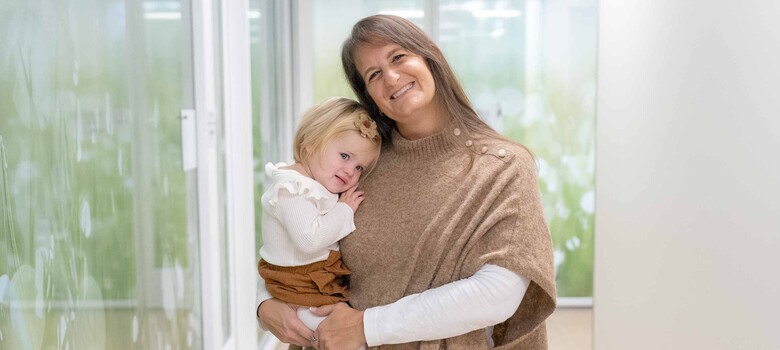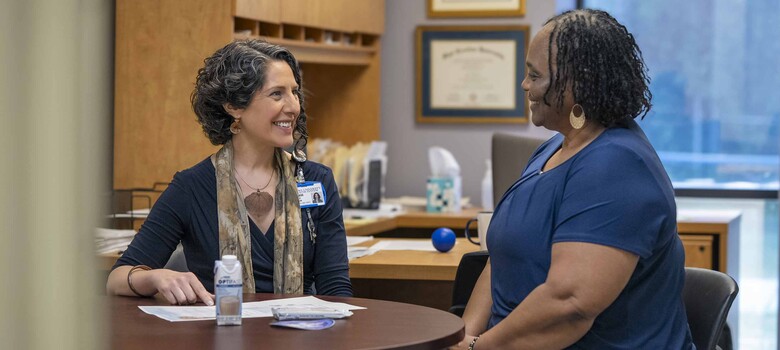 From the DukeHealth.org archives. Content may be out of date.
From the DukeHealth.org archives. Content may be out of date.
Why Children Should Wear Face Masks

Face masks are not just for adults. To help limit the spread of COVID-19, most children can wear a mask in public, as long as they are taught to do so in an age-appropriate way, said Ibukun Akinboyo, MD, a pediatric infectious diseases specialist at Duke Health. Take the time to teach your child that along with frequent handwashing and physical distancing, wearing a face mask correctly and consistently not only protects our communities, it also shows kindness and caring.
Explaining Face Masks to Children
Before asking children to wear a face mask, explain -- on their level -- why it is important. Put simply, masks prevent germs from spreading from one person to another, so they help us all stay healthy. That’s why it’s crucial for everyone to wear a mask outside the home, especially in places where physical distancing is challenging, such as a grocery store.
Making Masks Fun
For some children, seeing people in masks or wearing a mask themselves can be frightening. Dr. Akinboyo recommends introducing masks at home, where children feel safe and there are fewer distractions. Before wearing a mask in public, make sure your child can put it on and take it off unassisted. Encourage them to practice these skills and suggest they incorporate them into play, for instance, by placing a mask on a stuffed animal. Making or decorating a mask can give children a sense of ownership and make them proud to wear it. Anything to make the experience safe and fun -- or at least less intimidating -- is encouraged.
Some Safety Guidelines
Children younger than two and those with developmental disabilities should not wear face masks. Typically, they aren’t able to remove the mask if it interferes with breathing or poses another safety problem.
Children should also be able to wear a mask properly. To be effective, it must cover the nose and chin without slipping. And although it is tempting to play with the mask, explain to your child that frequently touching their mask or face is off limits. If their hands are contaminated, they can inadvertently expose themselves to the virus.
Children who cannot follow these instructions should not wear a mask. “Face masks are just one tool for preventing the spread of coronavirus. We should teach our children it’s not the only thing we can do. We can all cover our sneezes and wash our hands if we touch our mouth or nose,” said Dr. Akinboyo.
Lead by Example
Adults can encourage children to wear a face mask by modeling good behavior. Show them that it is safe -- and even a point of pride -- to wear a mask. It is important to reiterate the correct way to put it on and remove it -- and how to incorporate handwashing and physical distancing into a daily routine. Praise your child for helping to keep our communities safe. Let them know that together we can make a difference and limit the spread of COVID-19.



